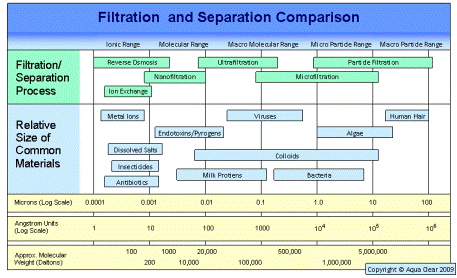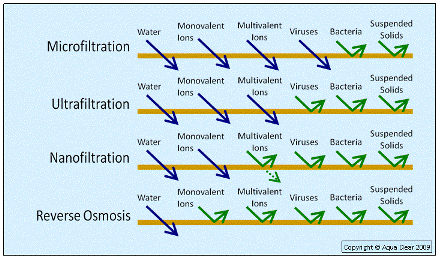Reverse Osmosis (RO) and Nanofiltration (Nano) are two very similar technologies. In appearance they are virtually identical and both use essentially the same technology to remove impurities from water or other liquids. In both systems, Membrane Elements (or membranes, or elements) are used to separate a liquid from contaminates. Membranes are basically filters with very small “openings” that prevent contaminates from passing through when the liquid that is being purified is “pushed” through the membrane.
Nanofiltration is a slightly newer technology, although it has been in use for drinking water applications since the mid ’90’s and by early 2000 there were over 9000 Nano membranes being used to purify drinking water for 500,000 people living in an area outside of Paris.
Nano was developed primarily for drinking water applications because RO was found to remove some of the minerals in water that are considered beneficial for human consumption. Nano allows these minerals to pass through the membrane with the water, but the Nano membrane will “block” pesticides and other contaminates that can be harmful to people. Although Nanofiltration was originally developed for drinking water applications, it is also becoming quite popular for irrigation use.
Nanofiltration is also emerging as an environmentally friendly alternative to traditional water softener systems for removing hardness from water.
Following are two charts that demonstrate the relative effectiveness of Reverse Osmosis (RO) relative to Nanofiltration (Nano) and other common filtration technologies. The second chart also provides some insight regarding the size of the particles that are able to pass through various types of filters.
Click on the charts for a larger version of each.
Click on Chart to Enlarge

AquaClear,LLC Reverse Osmosis vs. Nanofiltration and Other Filtration Technologies
For more information about RO or Nano systems, please click here to contact us.

